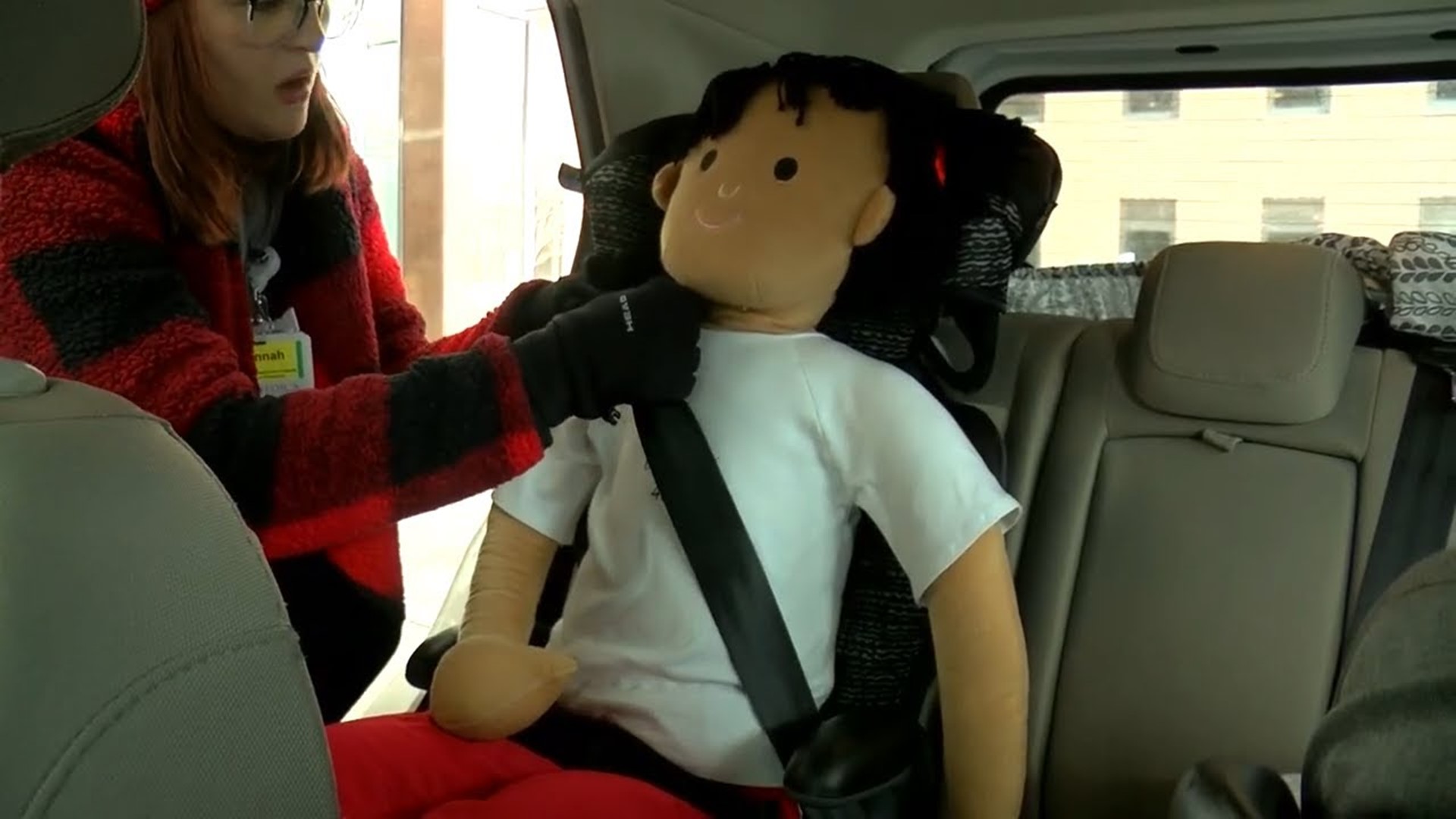TOLEDO, Ohio — The last week of January is Passenger Safety Awareness Week, which includes not only the safety of children in car seats but teenagers and adults as well.
Hannah Eberlein, the KISS -- Kids in Safety Seats -- program coordinator, said all occupants of a vehicle need to be harnessed properly to ensure safety.
Firstly, children need to be rear-facing as much as possible. When a baby is in a car seat, the safest way for them to ride in the car is facing the back of the seat, not forward. It is okay if the baby's feet touch the back of the seat, Eberlein said.
There are two methods to install a car seat: A seatbelt can be used to harness the seat or a lower anchor can snap the seat in place. But only one of these methods should be used, not both.
When attaching a car seat to the lower anchor, it is important to make sure that the lower anchor doesn't move. To test that, hold the anchor and move it side to side and forward and backward. The anchor should not move more than an inch in either direction.
When it is cold outside, make sure the child is not wearing a winter coat. A blanket over the child and tucked under the shoulders is the safest way to keep them warm in their car seat. The chest clip on the car seat should be positioned in line with the child's armpit level.
A child can stay in the rear-facing seat as long as they meet the manufacturer's guidelines. After they exceed these specifications, they should then move into the next level rear-convertible seat until they reach the maximum height and weight.
According to Ohio law, children are required to be in a child restraint until they are 8 years old or reach four foot nine inches.
Once a child is moved to a booster seat, it is important to make sure the seatbelt is across their chest not rubbing against the next. The lap portion of the seatbelt should be over the lap, not on the stomach.
Once a child has made it past a child restraint seat, it is important to make sure they practice the habit of putting on a seatbelt.
"If the driver is belted, 92-95% of the time those children are also going to be using their seatbelts as well and properly harnessed," Eberlein said. "Those are going to be those really good habits that you are teaching, and you bring throughout your teenage driving careers and your adult lifetime."
Passenger safety does not stop at children. It is important that teenagers and adults are also properly harnessed.
It is a common misconception that because the backseat is the safest place to ride as a passenger, the passengers don't need a seatbelt. However, if there is a car accident, the backseat passenger(s) can potentially launch all of their weight into the seat in front of them, harming both people.
Seatbelt usage for teenagers and adults is the same as it is for children: across the shoulders and over the lap, not behind you or under your arm. The car knows to lock the seatbelt if there is a crash to keep you in place. If it is not over your shoulder, it will not protect you.
Safe Kids of Greater Toledo has a page that posts even more tips to stay safe as well as sharing future events the community can attend.
The program also provides car seat checks once a week, and an appointment can be set up by calling 419-291-5993.

